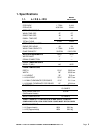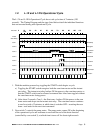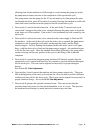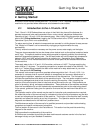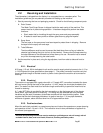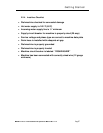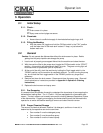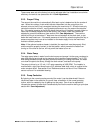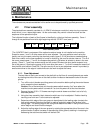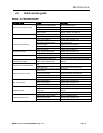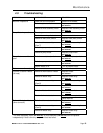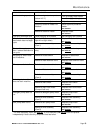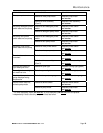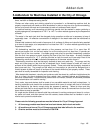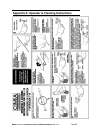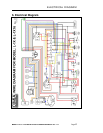
Addendum
5. Addendum for Machines Installed in the City of Chicago
“All food dispensing establishments using chlorine or other approved chemical sanitizers shall, at all
times, maintain an adequate testing device.”
“Dishes and other eating and drinking utensils to be washed in a dishwashing machine shall be
properly scraped and pre-rinsed and shall be stacked in racks or trays so as to avoid overcrowding,
and so as to permit the wash and rinse waters to reach all surfaces of each utensil.”
“In machine washing, multi-use eating and drinking utensils shall be washed in water containing a
suitable detergent at a temperature of 120° F to 140° F or other method approved by the Department
of Health.”
“The water in the wash tank shall be changed during operation as often as is necessary to keep it
reasonably clean. An effective concentration of detergent in the wash water shall be maintained at
all times.”
“Bactericidal treatment shall consist of exposure of all surfaces of dishes and utensils being washed
to a rinse of clean water, at a temperature of not less than 180° F or other method approved by the
Department of Health.”
“All dishwashing machines shall maintain a flow pressure not less than 15 or more than 25
pounds per square inch on the fresh water line at the machine and not less than 10 pounds per
square inch at the rinse nozzles. A suitable gauge cock shall be provided immediately upstream
from the final rinse sprays to permit checking the flow of the final rinse water. An easily readable
thermometer accurate to a
+2° F. shall be provided on both the wash and rinse water lines of the
dishwashing machine which will indicate the temperature of the water solution there in.”
“Dishwashing machines shall be thoroughly cleaned at least once each day. The pumps and the
wash and rinse sprays or jets shall be so designed that a forceful stream of water will reach all
surfaces of the utensils when they are properly racked. These parts shall be thoroughly cleaned at
least once each day. The pumps and the wash and rinse sprays or jets shall be designed that a
forceful stream of water will reach all surfaces of the utensils when they are properly racked. These
pars shall be readily accessible for inspection and cleaning.
“After bactericidal treatment, utensils and containers shall be stored at a sufficient height above the
floor in a clean, dry place, protected from flies, splash, dust, overhead leakage and condensation,
and other contamination. Containers and utensils shall be inverted, covered, or otherwise protected
from contamination until used for serving.”
Drain racks, trays and shelves shall be made of non-corrodible material and shall be kept clean. In
handling containers and utensils the surfaces thereof which come in contact with food or drink shall
not be touched by the hands, except during the process of washing. Tables for clean and dirty
dishes and food shall be so arranged that the dirty dishes will be as far removed from the food and
clean dishes as may be possible.
All single service articles and utensils shall be purchased in sanitary cartons and stored in a clean,
dry place until used, and after removal from the cartons, these articles shall be handled in such a
manner as to prevent contamination.
Please note the following procedures must be followed for City of Chicago Approval:
1. All low energy models must have low level sani-alarms, both visual and audio.
2. All models must have a City of Chicago approval data label affixed to the machine.
3. Chlorine sanitizer must be a minimum of 100 PPM.
MODEL L-1X & L-1X16 PARTS MANUAL Rev. 1.14 Page 15



